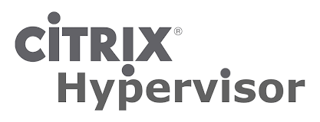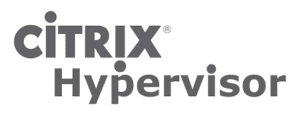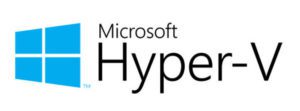

Server virtualization has been with us since the rapid rise of VMware almost two decades ago. With server sprawl so prevalent in the days when there were endless Windows boxes strewn across the data center or server room, it made perfect sense to consolidate multiple physical servers into one physical machine containing many virtual machines […]
Server virtualization has been with us since the rapid rise of VMware almost two decades ago. With server sprawl so prevalent in the days when there were endless Windows boxes strewn across the data center or server room, it made perfect sense to consolidate multiple physical servers into one physical machine containing many virtual machines (VMs). This immediately boosted that bane of IT in the early 2000s — poor rates of server utilization due to the model of one physical server hosting one application.
Server virtualization, then, is the process of dividing a physical server into many virtual servers. It is accomplished via software that enables each VM to run its own operating systems independently within a virtualization layer.
While VMware was the early pioneer, it doesn’t have it all its own way. Virtualization platforms from Microsoft, Red Hat, Citrix, and others make this a hot area of competition. Vendors continually update their offerings with features that improve networking performance, incorporate containers, or provide greater cloud functionality, to cite a few examples.
Server virtualization has many benefits. As a result, IT adopts it due to a variety of use cases. These include:
Also read: Hyperconverged Infrastructure is Reshaping IT Management
Those in the process of selecting server virtualization software, should pay attention to several key areas.
Obviously, any virtualization platform should support whatever operating systems (OS) are in use in the organization. Note, though, that some server virtualization varieties are more suited to a specific OS, while others are agnostic.
Some organizations are committed to vendors such as Microsoft, VMware, Oracle, IBM, or Citrix. In those cases, it doesn’t usually make sense to choose a hypervisor that goes against the grain. Those settled on Microsoft, for example, should probably stick to Hyper-V. Similarly, those heavily invested in the open source world, should probably stick to open source platforms such as Red Hat or Proxmox.
Some virtualization platforms scale better than others. If scalability is important, it may be wise to pay more for a platform that provides greater scalability features and offers the underlying infrastructure to deal with a huge number of VM. Further, scalability can work both ways. Some platforms do a better job than others of ramping up and down VM numbers due to seasonal demands and other factors.
Some virtualization software is more memory intensive than others. Therefore, simplicity or complexity of the virtualization environment must be considered. For basic needs, opt for a solution that saves headroom mainly for VMs without loading up the platform with a host of unnecessary bells and whistles. But others need those advanced features and so should opt for more sophisticated platforms that demand more in terms of memory and CPU power.
Also read: Transforming Networks: From Virtualization to Cloudification
There are many choices out there for server virtualization software. Here are our top picks in no particular order:
 Citrix Hypervisor includes optimization for workloads running on Citrix Virtual Apps and Desktops. With tight feature integration throughout the stack, Citrix Hypervisor exposes hardware-level features to boost the user experience, improve security, and simplify operational and network management. Containing plenty of enterprise features, Citrix Hypervisor can handle different workload types, mixed operating systems, and complex storage or networking requirements. Citrix is probably a good choice for those organizations deploying other Citrix tools.
Citrix Hypervisor includes optimization for workloads running on Citrix Virtual Apps and Desktops. With tight feature integration throughout the stack, Citrix Hypervisor exposes hardware-level features to boost the user experience, improve security, and simplify operational and network management. Containing plenty of enterprise features, Citrix Hypervisor can handle different workload types, mixed operating systems, and complex storage or networking requirements. Citrix is probably a good choice for those organizations deploying other Citrix tools.
Key Differentiators
 Red Hat Virtualization is an infrastructure solution for virtualized servers and technical workstations. Built on the Red Hat Enterprise Linux platform and KVM (Kernel-based Virtual Machine), it provides ease of use, agility, and security for virtualized, resource-intensive workloads. It helps organizations optimize their IT infrastructure with better performance, competitive pricing, and a Red Hat environment. This platform works best for existing Red Hat customers or those favoring open source.
Red Hat Virtualization is an infrastructure solution for virtualized servers and technical workstations. Built on the Red Hat Enterprise Linux platform and KVM (Kernel-based Virtual Machine), it provides ease of use, agility, and security for virtualized, resource-intensive workloads. It helps organizations optimize their IT infrastructure with better performance, competitive pricing, and a Red Hat environment. This platform works best for existing Red Hat customers or those favoring open source.
Key Differentiators:
Also read: The Growing Value of a Microservice Architecture
 VMware may be a victim of its own success. It is like navigating through a labyrinth to attempt to make sense of the various product names and versions of a legion of virtual apps, as well countless virtual tools. The hypervisor is actually ESXi but that name is largely buried these days within the larger vSphere package. Similarly, even vSphere can get a little lost within the many other VMware offerings. Yet competitors have a rough time trying to pry business away from those organizations thoroughly invested in VMware technology. After all, it has been the market leader for years and boasts a breadth of virtualization products and features second to none. This includes a vast array of compute, storage, cloud, and networking tools. Those wishing to avoid complexity or lacking the requisite in-house skills will probably venture elsewhere.
VMware may be a victim of its own success. It is like navigating through a labyrinth to attempt to make sense of the various product names and versions of a legion of virtual apps, as well countless virtual tools. The hypervisor is actually ESXi but that name is largely buried these days within the larger vSphere package. Similarly, even vSphere can get a little lost within the many other VMware offerings. Yet competitors have a rough time trying to pry business away from those organizations thoroughly invested in VMware technology. After all, it has been the market leader for years and boasts a breadth of virtualization products and features second to none. This includes a vast array of compute, storage, cloud, and networking tools. Those wishing to avoid complexity or lacking the requisite in-house skills will probably venture elsewhere.
Key Differentiators
![]() Proxmox VE (virtual environment) is another open-source server management alternative. It integrates KVM hypervisor and LXC, software-defined storage, and networking functionality on a single platform. The user interface makes it relatively easy to manage VMs and containers, high availability clusters, or integrated disaster recovery tools. Based on Debian GNU/Linux, it uses a customized Linux kernel. This platform would be an option for those comfortable with the nuances of open source code.
Proxmox VE (virtual environment) is another open-source server management alternative. It integrates KVM hypervisor and LXC, software-defined storage, and networking functionality on a single platform. The user interface makes it relatively easy to manage VMs and containers, high availability clusters, or integrated disaster recovery tools. Based on Debian GNU/Linux, it uses a customized Linux kernel. This platform would be an option for those comfortable with the nuances of open source code.
Key Differentiators
 After launching Microsoft Hyper-V in 2008, it took a while for it to establish itself. Today it stands as a major competitor to VMware. Anyone committed to Azure, Office 365, and Windows is unlikely to look elsewhere for server virtualization. However, it suffers from the same issue as VMware – an overabundance of riches. An endless array of products, features, and sites makes it hard to even find Hyper-V on the Microsoft website. It appears to have been relegated to a feature of large tools such as Windows Server or Microsoft Azure. It remains to be seen, then, whether that status will see it prioritized internally on the product development front.
After launching Microsoft Hyper-V in 2008, it took a while for it to establish itself. Today it stands as a major competitor to VMware. Anyone committed to Azure, Office 365, and Windows is unlikely to look elsewhere for server virtualization. However, it suffers from the same issue as VMware – an overabundance of riches. An endless array of products, features, and sites makes it hard to even find Hyper-V on the Microsoft website. It appears to have been relegated to a feature of large tools such as Windows Server or Microsoft Azure. It remains to be seen, then, whether that status will see it prioritized internally on the product development front.
Key Differentiators
![]() Nutanix AHV aims to simplify the world of server virtualization. It does away with the model that views virtualization as a complex layer of the IT stack that is licensed, deployed, and managed separately. Instead, Nutanix AHV offers a secure, enterprise-grade virtualization solution that can provision and optimize VMs and containers, monitor infrastructure and application performance, scale your environment, and automate mundane IT operations. Nutanix is a potential candidate for startups that have not yet become invested in one of the major platforms, or companies wishing to completely overhaul their entire infrastructure.
Nutanix AHV aims to simplify the world of server virtualization. It does away with the model that views virtualization as a complex layer of the IT stack that is licensed, deployed, and managed separately. Instead, Nutanix AHV offers a secure, enterprise-grade virtualization solution that can provision and optimize VMs and containers, monitor infrastructure and application performance, scale your environment, and automate mundane IT operations. Nutanix is a potential candidate for startups that have not yet become invested in one of the major platforms, or companies wishing to completely overhaul their entire infrastructure.
Key Differentiators
Also read: Understanding the Role of Enterprise Data Fabrics
 Virtuozzo Hybrid Server delivers a mix of system containers, hypervisors based on optimized KVM, and software-defined storage. Though not as well known as Citrix, Hyper-V, or vSphere, Virtuozzo powers more than five million virtual environments. It claims to have better performance and to have twice the density of VMware. It includes AES-256 at-rest encryption and has a hypervisor core built on top of open-source KVM. Those wishing to consolidate and simplify containers, hypervisors and storage should consider Virtuozzo.
Virtuozzo Hybrid Server delivers a mix of system containers, hypervisors based on optimized KVM, and software-defined storage. Though not as well known as Citrix, Hyper-V, or vSphere, Virtuozzo powers more than five million virtual environments. It claims to have better performance and to have twice the density of VMware. It includes AES-256 at-rest encryption and has a hypervisor core built on top of open-source KVM. Those wishing to consolidate and simplify containers, hypervisors and storage should consider Virtuozzo.
Key Differentiators
 Oracle VM VirtualBox is a free, open-source hosted hypervisor for x86 virtualization that was developed initially by Innotek, acquired by Sun Microsystems and then by Oracle. It can be installed on Windows, macOS, Linux, Solaris, and OpenSolaris. VirtualBox is being constantly updated with new features, and wider support of systems, platforms, and applications. This general-purpose virtualizer for x86 hardware is not just for server virtualization. It also applies to desktop and embedded applications. But it is really only applicable to those with Oracle-rich environments.
Oracle VM VirtualBox is a free, open-source hosted hypervisor for x86 virtualization that was developed initially by Innotek, acquired by Sun Microsystems and then by Oracle. It can be installed on Windows, macOS, Linux, Solaris, and OpenSolaris. VirtualBox is being constantly updated with new features, and wider support of systems, platforms, and applications. This general-purpose virtualizer for x86 hardware is not just for server virtualization. It also applies to desktop and embedded applications. But it is really only applicable to those with Oracle-rich environments.
Key Differentiators
 PowerVM is a feature of IBM servers such as Power5, Power6, Power7, Power8, Power9 and Power10 and is required for support of IBM micro-partitions and other advanced features. Support is provided for IBM i, AIX, and Linux. IBM PowerVM can consolidate multiple workloads onto fewer systems, increasing server utilization and reducing cost. It is a secure and scalable server virtualization environment that is applicable to AIX, IBM i, and Linux applications running on the IBM Power Systems platform.
PowerVM is a feature of IBM servers such as Power5, Power6, Power7, Power8, Power9 and Power10 and is required for support of IBM micro-partitions and other advanced features. Support is provided for IBM i, AIX, and Linux. IBM PowerVM can consolidate multiple workloads onto fewer systems, increasing server utilization and reducing cost. It is a secure and scalable server virtualization environment that is applicable to AIX, IBM i, and Linux applications running on the IBM Power Systems platform.
Key Differentiators
Read next: Top Enterprise Networking Trends

Enterprise Networking Planet aims to educate and assist IT administrators in building strong network infrastructures for their enterprise companies. Enterprise Networking Planet contributors write about relevant and useful topics on the cutting edge of enterprise networking based on years of personal experience in the field.
Property of TechnologyAdvice. © 2025 TechnologyAdvice. All Rights Reserved
Advertiser Disclosure: Some of the products that appear on this site are from companies from which TechnologyAdvice receives compensation. This compensation may impact how and where products appear on this site including, for example, the order in which they appear. TechnologyAdvice does not include all companies or all types of products available in the marketplace.